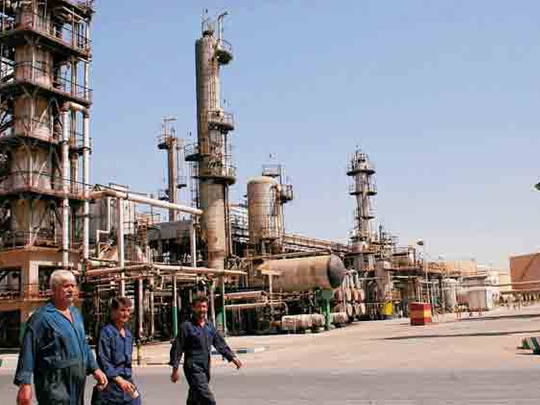
Abu Dhabi: Uncertainty persists over how much time it could take for Iran to ramp up its oil production if sanctions are eased following an initial deal between Iran and six major world powers last week in Switzerland.
One analyst said it may take several months for Iran to increase its oil production, while another said it would take three months. Iran’s petroleum minister said its oil exports would double once sanctions are eased.
Dr Mamdouh G Salameh, an international oil economist and World Bank consultant said Iranian oilfields are old and require massive repairs to increase production.
“It will take Iran more than two years to deploy the enhanced oil recovery (EOR) technology to repair the damaged reservoirs in its oilfields and try to increase production,” he said.
“Even then it might only succeed in limiting the fast depletion in its oilfields rather than increase production,” he said.
Oil prices went down by almost five per cent on Thursday after Iran and six major world powers including the US, Great Britain, Russia, France and Germany announced that they reached a framework deal on lifting of Iranian sanctions in the Switzerland city of Lausanne.
Oil prices have recovered in the last two days after analysts estimated that it may take several months for Iran to increase its oil production. Brent, the international benchmark for crude oil was trading at $56.46 on Monday at about 5:30pm.
According to some analysts, Iran has 20 million barrels of oil in floating storage, which is ready for shipment once sanctions are eased. Dr Salameh doubted the accuracy of the report.
“If this is true, then why it did not export it to add to its revenue. The truth of the matter is that Iran was not able to produce enough to export because of its damaged reservoirs.”
Francisco Quintana, head of economic research at Asiya Investments said the International Energy Agency estimated a couple of months ago that it would take approximately 3 months to increase production to its full capacity of around 3.6 million barrels per day, a 800,000 bpd increase from today’s level.
“In the best case scenario for Iran, with an agreement signed on June 30, sanctions lifted shortly after, and assuming IEA’s estimates are correct, we could have that extra oil in the market by the end of October maybe,” he said.
He said the agreement is likely to be postponed, and increasing capacity will require investments that foreign firms are not willing to undertake at current price levels and the Iranian government can’t afford.
“In my opinion it’s likelier a more gradual increase in capacity, maybe half a million extra bpd by the end of the year.”
On the other hand, Iran’s petroleum minister has told a group of lawmakers that the country’s oil exports would double to 2 million barrel per day (mbd) once sanctions have been lifted, Petroleum Ministry’s website Shana said.
“After the lifting of sanctions, Iran’s oil exports would increase from around 1mbd to more than 2 mbd,” Jalil Jaafari, secretary of the Majlis Energy Committee, quoted Bijan Namdar Zangeneh as having told the committee members.
The website also said that foreign investors would flock to oil and petrochemical sector once sanctions are lifted and the industry needs $8 billion a year of investment to make up for its backwardness.
An important member of the Organisation of the Petroleum Exporting Counties (Opec), Iran has the world’s fourth largest proven oil reserves after Saudi Arabia, Venezuela and Canada. The country’s annual production is estimated to be about 2.8 million barrels per day.
Iran and six world powers would continue to hold discussions till they reach a final deal by June 30.












